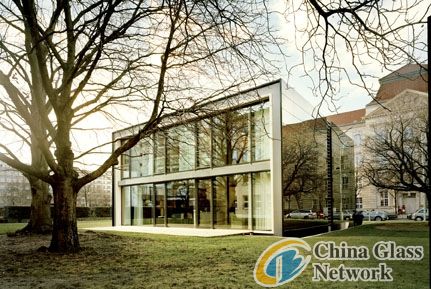Post Time:Feb 01,2013Classify:Industry NewsView:420
A building that produces more energy than it consumes: the Efficiency House Plus shows that it is possible to build detached houses that can function as miniature power stations. Power is supplied by the photovoltaic modules that are installed not only on the roof but also on the facade (StoVentec ARTline Invisible). They generate so much energy that the research and model project also doubles as a charging station for electric vehicles. The sustainable approach adopted even looks beyond the useful life of the building, as every single part of it can be recycled. It is currently home to a family of four.

Jörg Welke und Simone Wiechers look out through the full-surface glass facade of their living room onto a small garden which is bordered by a four-storey administrative building. When they and their children leave the building through the front door, they face the Berlin University of the Arts. The location of the family´s temporary home alone gives away the fact that this is not a normal house: they live in the Efficiency House Plus, a building erected as part of the "Zukunft Bau" building for the future initiative launched by the Federal Ministry of Transport, Building and Urban Development. The design for the research and model project came from a working party collaboration between the Institute for Lightweight Structures and Conceptual Design (ILEK) at the University of Stuttgart and Werner Sobek´s office. The aim was to build a house that would produce more energy than it consumed during the course of the year. The design also aimed at demonstrating the potential that could be tapped into by bringing together electric mobility and energy-efficient construction: the excess energy can be used to power an electric vehicle, for example. The power demand of the house, including the charging station, was forecast to be approximately 15,400 kWh/year, whilst the power yield was estimated at 16,630 kWh/year.
For a harmonised appearance, the planners also selected a ventilated rainscreen facade system with concealed fixing (StoVentec Glass) for the north-east side, featuring opaque black glass panels. The front and garden sides of the house are characterised by transparent facades with triple insulation glazing. Amongst others, the energy generated by the house is used for lighting and to run household appliances. A heat pump warms the heating system and heats the tap water. But as well as impressing with its intelligence, the building has a sustainable design: once the test phase is completed, the house can be taken down and rebuilt somewhere else. Furthermore, at the end of its useful life, it can be completely recycled.
Source: STO AGAuthor: shangyi